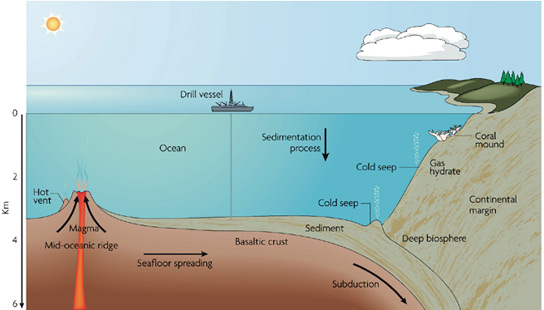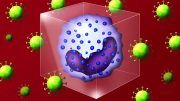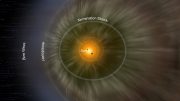
Researchers have created the most accurate model of the geographical distribution of microbes in marine sediment, leading to an estimate that the number of microbes living on Earth is drastically lower than previously thought.
The floor of the ocean is home to 2.9×1029 single-celled organisms but this large number, 10 million trillion microbes for every human on planet Earth, is only 8% of the previous estimate of 35.5×1029. Jens Kallmeyer, a geomicrobiologist, and his colleagues at the University of Potsdam in Germany have created the most accurate model of the geographical distribution of microbes in the marine sediment. They published their findings in the journal Proceedings of the National Academy of Sciences.
Kallmeyer states that for the last decade, scientists have had a suspicion that the earlier estimate was flawed in some manner. Recently, Kallmeyer and his colleagues amassed new data by drilling holes into the ocean floor to study microbes surviving at the extremes of nutrient starvation. This data was used to create global maps that could more accurately predict the biomass hidden kilometers beneath the ocean sediment.

The new calculations decrease previous estimates by 92% and reduce the number of all microbes on Earth by 50% to between 9.2×1029 and 31.7×1029. This huge number means that they still play a key role in global biogeochemical cycles. The previous estimate was skewed because it was based on work done in nutrient-rich coastal areas whereas Kallmeyer’s research has been in barren areas, such as the South Pacific Gyre, one of the most nutrient-depleted regions in the oceans.
While some think that these new numbers are far more accurate of the overall picture of microbial life on Earth, other geomicrobiologists, like John Parkes, think that the number of microbes is on the low side because of the difficulties associated with counting small numbers of cells encrusted in sediment.
Reference: “Global distribution of microbial abundance and biomass in subseafloor sediment” by Jens Kallmeyer, Robert Pockalny, Rishi Ram Adhikari, David C. Smith and Steven D’Hondt, 27 August 2012, Proceedings of the National Academy of Sciences.
DOI: 10.1073/pnas.1203849109









Come on this is a guess just like the first one. They simply do not have enough samples to make an accurate guess. You would need tens of thousands of core samples accurately counted to get away from a guess to an estimate like the exit polls on election day. They do not have that daas.